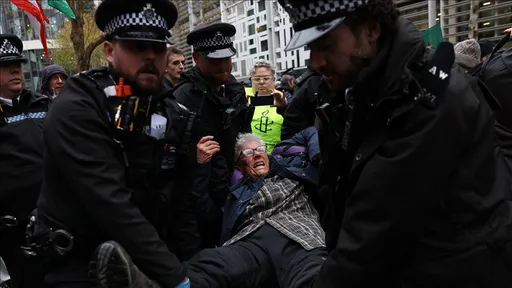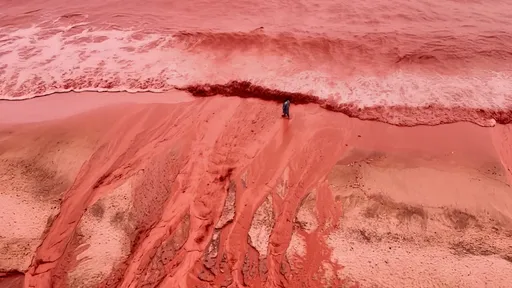When a deadly wildfire engulfed the Hawaiian city of Lahaina on the night of August 8, many residents were caught by surprise. Some who were trapped in their homes and their cars had only minutes to spare before managing to escape with nothing but the clothes on their backs. Scores lost their lives.
The wildfire that killed at least 99 people is now considered as among the world's deadliest of the 21st century, and authorities fear the death toll could go higher.
The US emergency agency FEMA said it will cost at least $5.5 billion to rebuild the city of 13,000 people, but the loss of lives and damage to the heritage in the city that was once the capital of the Kingdom of Hawaii is incalculable.
In recent weeks, similar wildfires have also been reported in Greece, Italy and Algeria, causing dozens of deaths and forcing thousands of residents as well as tourists to evacuate.
With better preparation, however, authorities and emergency agencies say that deadly consequences of wildfires similar to the one that hit Lahaina could be prevented.
Here are some of the survival steps that can help people escape deadly wildfires:
Always prepare for evacuation
The first option for people who are caught in a wildfire is to evacuate safely.
In Flagstaff, Arizona, an area in the US that is frequently hit by wildfires during the peak of the summer season, residents are advised to plan ahead for quick evacuations.
An online guide published by the city government stated that residents should make a list of the important items to take with them such as documents and other personal records, and to store them in one location that can be easily accessed.
"Remember the five Ps”, the guide stated. That include (1) PILLS, eyeglasses and other medical supplies; (2) PAPERS, like birth certificates, passports and tax records; (3) PICTURES, small artwork, jewelry and other important mementos; (4) PETS, pet food, leashes and pet carriers; and (5) PHONE, charger and phone numbers of people you will want to call.
Also, residents are advised to keep the contact information of emergency services, fire departments and evacuation centres.
If possible, residents of wildfire-prone areas are also advised to coordinate with their community and talk to their neighbours and other family members about how they can work together in the event of an emergency.
"You will be better prepared to safely reunite your family and loved ones during an emergency if you think ahead and communicate with others in advance."
Know your escape routes
When on the road, individuals should have prior knowledge of the evacuation routes, and that those routes should lead away from the fire, or the direction that the fire is moving.
In the recent fire in Hawaii, some residents driving there cars were trapped in traffic towards the direction of the fast-moving fire, resulting in them abandoning their vehicles.
Ahead of a potential wildfire, residents in fire-prone areas are also reminded to identify several escape route options, so they can choose the safest one.
"Try to avoid narrow roads that could easily become blocked, and take a vehicle that has enough gas for lots of slow driving and waiting," the Flagstaff emergency website stated.
In case of emergency situations, residents are told to leave their residential gates open for easy access by firefighters.
"Drive slowly with your headlights on and doors unlocked. If it is smoky, close the windows and turn off any ventilation fan," the website added.
Residents should also avoid returning to their homes until emergency personnel have determined that it is safe, or they might face the risk of being trapped in fast-moving fires.
What to do if you are trapped in a car or on foot?
If trapped by fire while driving, people are told to park in an area that is clear of vegetation like a surface that is paved or covered in gravel or dirt.
Travelers should also be aware that the tires of their vehicles could burst into flames.
They should also close all windows and vents of their vehicle, and cover themselves with a blanket or jacket and lie on the car floor, and stay in their car until the fire passes.
If trapped on foot, individuals and families are advised to call emergency rescuers and inform them of your location and situation. But if phones are not working, just like the case during the recent wildfire in Hawaii, they should immediately find an area without vegetation and grasses, or look for ditches and low ground depressions, where the heat is at its lowest. They should then cover their body and lay face down on the ground.
Warning before jumping into water
With no other way to escape the raging wildfire that was further stoked by intense winds of up to 112 kilometres per hour, several people reportedly jumped into the sea along the coast of Lahaina.
According to several first-person testimonies, stranded people who fled from their cars and nearby homes clambered over Lahaina's sea wall and took refuge on the strip of rocks along the water.
As the fire unleashed intense heat and thick smoke, the wind also whipped the sea causing waves to rise, even as the people tried to shield themselves from danger. As temperatures rose, it pushed survivors further to the water's edge, if not jump to the sea altogether.
Others reportedly hid under a pier to escape the heat above. Some videos circulating online showed people wading in the sea, but the origin of the posts could not be independently verified.
But as a Washington Post article warned, jumping into water should be a considered as a last resort.
The article pointed out that even if people are submerged in water and protected from the burning fire, they are still at risk from falling ash and embers, and they could die of suffocation due to the thick smoke and lack of oxygen. They could also be in danger of being trapped in the water under the intense heat.
"It’s the smoke that’s going to kill you," Carl Otsuka, fire inspector for the Honolulu Fire Department, was quoted by the news report as saying.
According to one report, an 86-year-old man who jumped into the sea in Hawaii did not survive, although many others did with burns, smoke inhalation and hypothermia. Wading into a body of water could also put people at risk of drowning.
Evacuating by sea using boats could be a better option. In the recent wildfire that burned in the coastal town of Nea Aghialos in Greece, photos showed several dozens of people being rescued by emergency personnel using boats, as they failed to make an escape by land. Still, some of the survivors could not escape from intense smoke inhalation that resulted in hospitalisation.
Last resort: Taking shelter at home
If fleeing from the wildfire is not an option, residents should take shelter in a home, or at a neighbour's residence.
Using sprinklers, residents are advised to wet the yard and roof of their residence, to prevent it from quickly catching fire, although the intense heat could still possibly ignite the fire.
Houses with wooden siding and shingles are more vulnerable to catching fire, as is the case of buildings located in a narrow canyon or is on a steep slope with continuous thick vegetation below.
To avoid possible combustion, materials such as brush and wood piles as well as thick grass, trees and dry leaves must also be cleared from the homes.
Meanwhile, all propane or natural gas sources to the house should also be turned off, according to emergency advisory. The same should be done to other equipment that circulates air in the house.
To prevent sparks and embers from blowing inside the house, all windows and doors must also be kept close, and fabrics as well as fabric-covered furnitures that easily catch fire must also be kept from large widows and sliding doors. To further slow the spread of smoke or fire inside the house, all interior doors must also be kept shut.
In case power is lost, flashlights and extra batteries should come in handy, as well as a cellphone, a battery-powered radio. A fire extinguisher and some bottled water should be easily accessible.
To protect individuals from smoke inhalation that could damage the lungs, individuals must also cover their nose and mouth with dry cloth or possibly a mask. They can also protect their skin by wearing cotton or wool long pants, a long sleeve shirt or jacket and gloves.
Wear nylon or other synthetic fabrics are not advised.
In case of burns, the MIRA safety website stated that it could be cooled down as quickly as possible. Cold running water works, if available, it said. Removing items that could cause swelling such as jewellery and tight-fitting items. Applying first-aid medication such as aloe vera and mild lotion is also advised before getting proper medical treatment after the emergency.
In all, time is of the essence in preparing or escaping from a wildfire, as many Hawaii residents have learned. It could take a lifetime for it to recover from its aftermath.
























